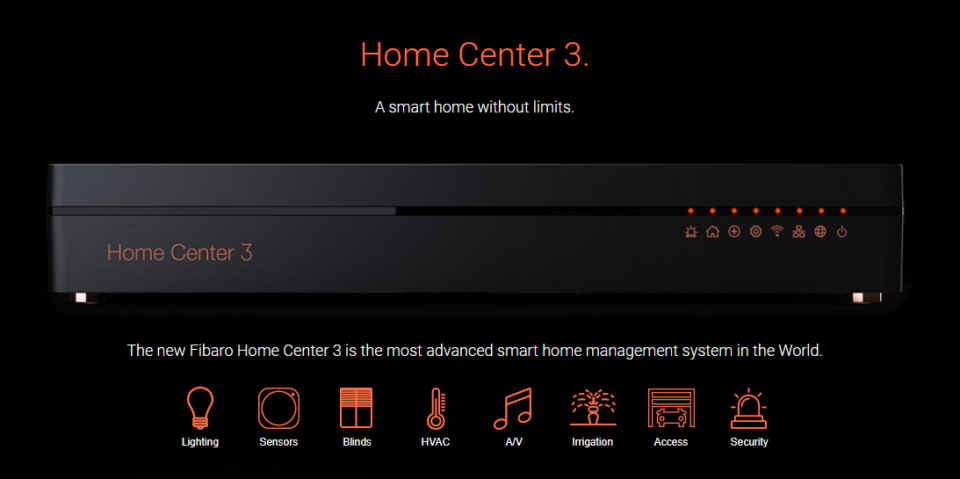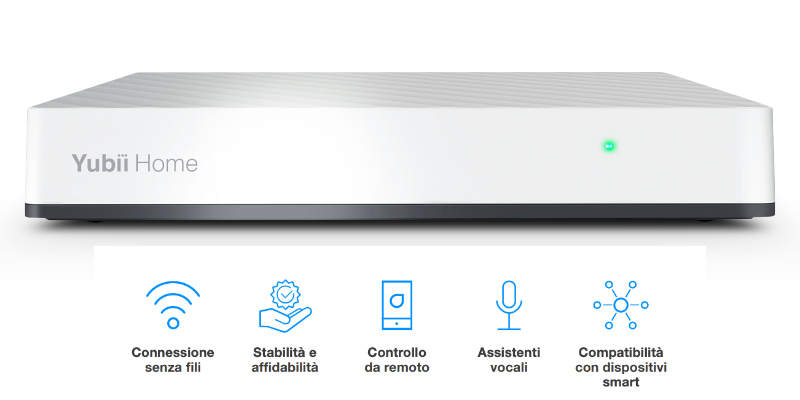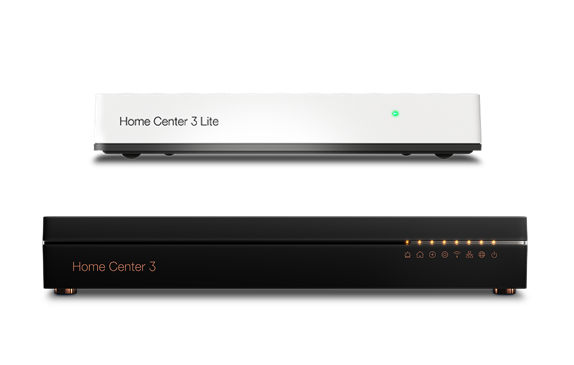As smart home technology continues to evolve, the demand for centralized systems that control various devices and services within homes is on the rise. Two prominent contenders in this arena are Yubii Home and Home Center 3. Both offer impressive features and promise to streamline home automation. However, when it comes to choosing between them, understanding their functionalities, compatibility, ease of use, and overall performance becomes crucial. Let’s delve deeper into Yubii Home and Home Center 3 to determine which might be the better choice for your smart home setup.
Read more: Smart Home Features That Are a Must-Have for Every RoomTable of Contents
ToggleHome Center 3 vs Yubii Home: Key Differences
Here are the key distinctions between the two systems at a glance:
- Model Numbers: Home Center 3 is identified as HC3-001, while Yubii Home bears the label YH-001.
- Device Capacity: Home Center 3 has the capacity to manage up to 230 Z-Wave devices, whereas Yubii Home is designed for a maximum of 40 devices.
- Communication Protocols: Home Center 3 boasts a broader array of communication protocols, including Z-Wave 500 and NICE 433MHz. Conversely, Yubii Home primarily utilizes Z-Wave 700 and NICE 433MHz.
- Physical Size: Home Center 3 is marginally larger, measuring 220x140x35 mm, whereas Yubii Home has dimensions of 178x110x31 mm.
- Power Requirements: Home Center 3 necessitates a 12V DC power supply, while Yubii Home operates on 5V DC.
Home Center 3: The Powerhouse Controller

Fibaro’s Home Center 3, identified by model number HC3-001 is a robust smart home hub that offers advanced automation capabilities. It aims to provide users with a comprehensive system for managing their smart devices while offering a high level of customization and control. Tailored for users seeking a comprehensive smart home experience, it boasts a robust Quad-Core ARM Cortex A53 1.2GHz processor and 2GB RAM. This powerful hub can support up to 230 Z-Wave devices and offers a diverse range of communication protocols, including Z-Wave 500 and NICE 433MHz. Its larger physical dimensions (220x140x35 mm) house a 12V DC power supply, ensuring consistent and reliable performance. With its extensive capabilities, Home Center 3 is an excellent choice for individuals aiming to establish an expansive and intricate smart home system.
Features of Home Center 3:
Home Center 3 comes equipped with a plethora of features:
- Support for up to 230 Z-Wave devices
- Quad-Core ARM Cortex A53 1.2GHz Processor
- 2GB RAM and 8GB eMMC Flash Memory
- Diverse communication protocols, including Z-Wave 500 and NICE 433MHz
- 12V DC power supply
- Dimensions: 220x140x35 mm
User Experience and Ease of Use
Home Center 3’s interface is sophisticated and may initially appear complex for beginners. However, for tech-savvy users who appreciate in-depth customization and control, the learning curve might be worth it. The setup process can be more involved due to its advanced features, requiring a more meticulous configuration of devices and automation rules.
Yubii Home: The All-in-One Solution

Yubii Home, identified by the model number YH-001, represents Fibaro’s solution for individuals seeking a simplified and more compact smart home experience. It caters especially to smaller homes and apartments, accommodating up to 40 Z-Wave devices. While it might not boast the extensive range of communication protocols found in the Home Center 3, it still supports Z-Wave 700 and NICE 433MHz. Its compact dimensions (178x110x31 mm) and reliance on a 5V DC power supply render it a convenient choice for those embarking on their smart home journey or managing smaller-scale setups.
Features of Yubii Home:
Yubii Home’s user-friendly interface makes it accessible to both tech-savvy individuals and those new to smart home setups. It offers features such as:
- Support for up to 40 Z-Wave devices
- Single-Core ARM Cortex A7 900 MHz Processor
- 512MB RAM and 4GB eMMC Flash Memory
- Communication protocols: Z-Wave 700 and NICE 433MHz
- 5V DC power supply
- Dimensions: 178x110x31 mm
User Experience and Ease of Use
Yubii Home boasts an intuitive interface, making it relatively easy for users to navigate and manage their connected devices. The setup process is streamlined, allowing users to add and configure devices effortlessly. Its compatibility with a wide range of devices is a significant advantage, as it reduces the likelihood of encountering compatibility issues commonly faced in mixed smart home ecosystems.
Choosing Between Yubii Home and Home Center 3
Advantages and Disadvantages of Home Center 3
Advantages
- Extensive device support
- Robust processor and generous memory capacity
- Versatile communication protocols
Disadvantages
- Might be overkill for smaller setups
- Higher price point
Advantages and Disadvantages of Yubii Home
Advantages
- Perfect fit for smaller homes and apartments
- Compact and straightforward installation
- Cost-effective option
Disadvantages
- Restricted device compatibility
- Less powerful processor and lower memory
Home Center 3 Lite: Another Option to Consider

While our primary focus revolves around Yubii Home and Home Center 3, it’s important to note the Home Center 3 Lite is a feasible alternative. Essentially, the Home Center 3 Lite mimics the functionalities of Yubii Home but lacks support for NICE. If your primary interest lies in Z-Wave functionality and you can forgo NICE compatibility, the Home Center 3 Lite could be an ideal choice for you. Moreover, priced lower than Yubii Home, it offers a cost-efficient solution for those seeking a streamlined smart home experience without exceeding their budget.
Home Center 3, Home Center 3 Lite, and Yubii Home Comparison
Not sure which gateway should you choose? Explore the table below to find out the most important differences between Home Center 3, Home Center 3 Lite, and Yubii Home.
| Home Center 3 | Home Center 3 Lite | Yubii Home | |
|---|---|---|---|
| APPLICATION | Versatile application in building automation: houses, apartments | Smaller houses (recommended up to 100 m2) and apartments | Smaller houses (recommended up to 100 m2) and apartments |
| NUMBER OF SUPPORTED Z-WAVE DEVICES | Up to 230 devices | Recommended up to 40 devices | Recommended up to 40 devices |
| NUMBER OF SUPPORTED NICE DEVICES | Unlimited | None | Recommended up to 40 devices |
| COMMUNICATION TECHNOLOGIES | Z-Wave 500 NICE 433MHz | Z-Wave 700 | Z-Wave 700 NICE 433MHz |
| TECHNOLOGIES PREPARED FOR FUTURE IMPLEMENTATION | Zigbee, BLE NICE 868MHz | None | NICE 868MHz |
| NETWORK TECHNOLOGIES | Ethernet, Wi-Fi 2.4GHz / 5GHz | Wi-Fi 2.4GHz | Wi-Fi 2.4GHz |
| PROCESSOR | Quad-Core ARM Cortex A53 1,2GHz | Single-Core ARM Cortex A7 900 MHz | Single-Core ARM Cortex A7 900 MHz |
| RAM | 2 GB | 512 MB | 512 MB |
| FLASH MEMORY | 8 GB eMMC | 4 GB eMMC | 4 GB eMMC |
| AUTOMATION FEATURES | LUA, block scenes, panels, schedules | LUA, block scenes, panels, schedules | LUA, block scenes, panels, schedules |
| MAXIMUM NUMBER of SCENES | Unlimited | Up to 20 scenes | Up to 20 scenes |
| IP CAMERAS SUPPORT | Unlimited | 1 MJPG IP camera | 1 MJPG IP camera |
| PLUGINS and QUICK APP SUPPORT | Unlimited | 5 plugins and 10 quick apps | 5 plugins and 10 quick apps |
| DATA MIGRATION | Yes, from HCL, HC2 | None | None |
| GATEWAY CONNECTION | MASTER and SLAVE mode | SLAVE mode (available with the upcoming update) | SLAVE mode (available with the upcoming update) |
Conclusion
The choice between Yubii Home and Home Center 3 ultimately depends on individual preferences, the complexity of the smart home setup, and the desired level of customization. Yubii Home presents itself as a versatile and user-friendly solution suitable for beginners or those with smaller setups. On the other hand, Home Center 3 caters to users who prioritize advanced automation, a feature-packed system capable of managing numerous devices, detailed customization, and control over their smart home ecosystem.
Before making a decision, consider your specific smart home needs, the devices you currently own or plan to acquire, and the level of control and customization you desire. Both Yubii Home and Home Center 3 offer compelling features, making either choice a step toward creating a more connected and efficient home environment.
However, in our view, Home Center 3 provides greater versatility, particularly if you have plans to expand your smart home down the line.
